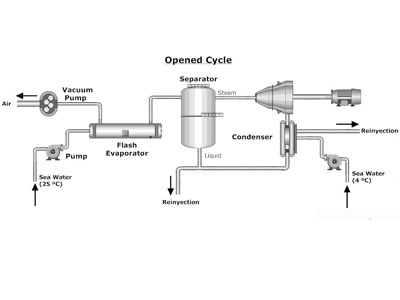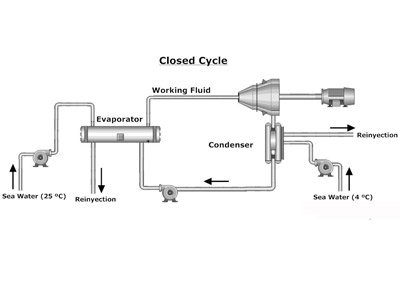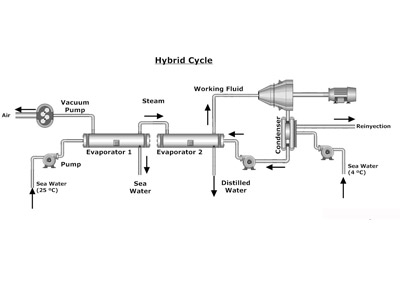Ocean Thermal Energy Conversion (OTEC)
An OTEC unit is a power cycle taking the thermal gradient of the ocean as main source. Geographical zones taking advantage of this gradient are within the geographical tropics, where, at a depth of 1 kilometer, gradients up to 20 °C can be found. The cycle operates as a modified Rankine Cycle, with three main variations of the cycle.
Open cycle:
It uses flash evaporation to generate dry steam, which is sent to the turbine; the outlet of the turbine is directly sent to the surrounding sea water. The efficiency of the cycle is a consequence of the thermal gradient, so if a gradient of 21 °C is present, an efficiency up to 8% can be achieved.
Closed cycle:
This cycle uses a refrigerant as working fluid, taking advantage of lower boiling points, evaporating the working fluid through heat exchangers before the inlet of the turbine. After this process, it will condense to start the cycle transferring its energy to cold sea water in a heat exchanger. Common working fluids for this cycle are propane, freon and ammonia.
Hybrid cycle:
These plants are able to generate power and desalinate water simultaneously. Both benefits are achieved through a closed with multiple evaporation stages, being the condensed liquid of the last chamber, a subproduct of this kind of plants.



